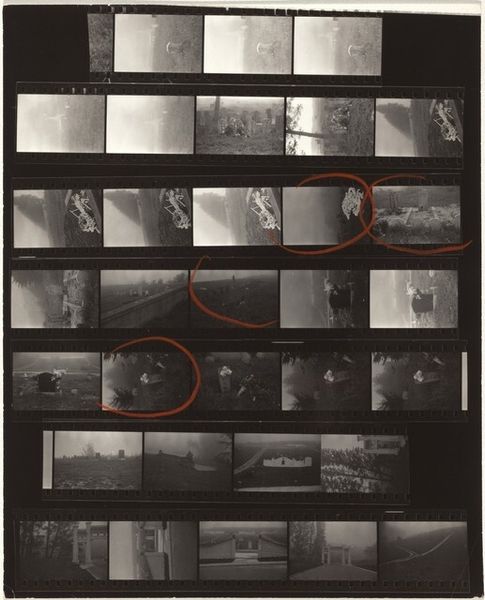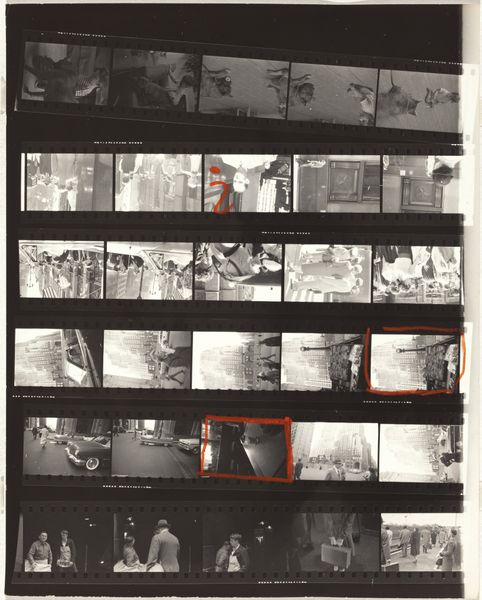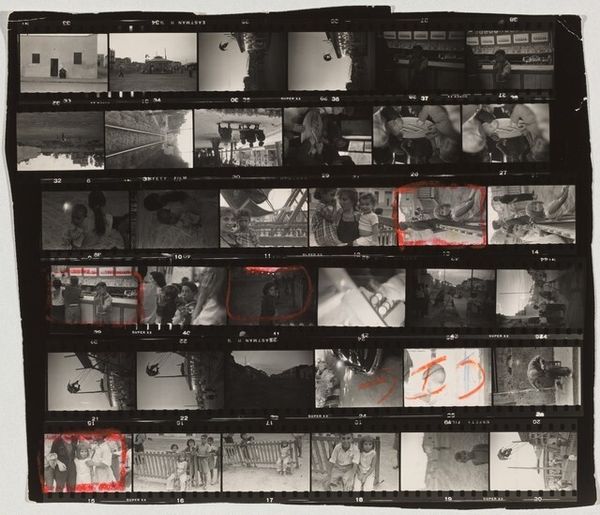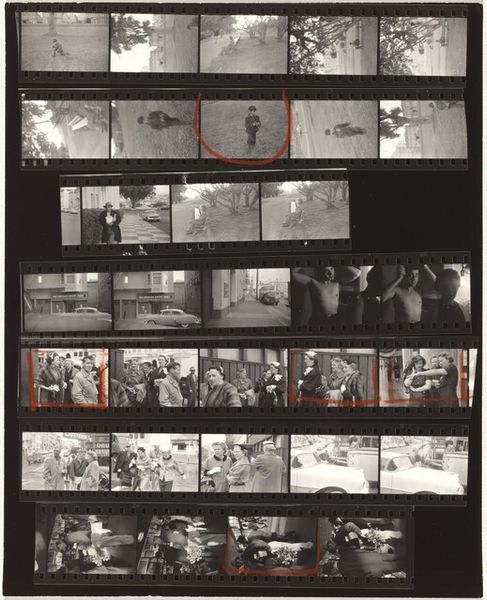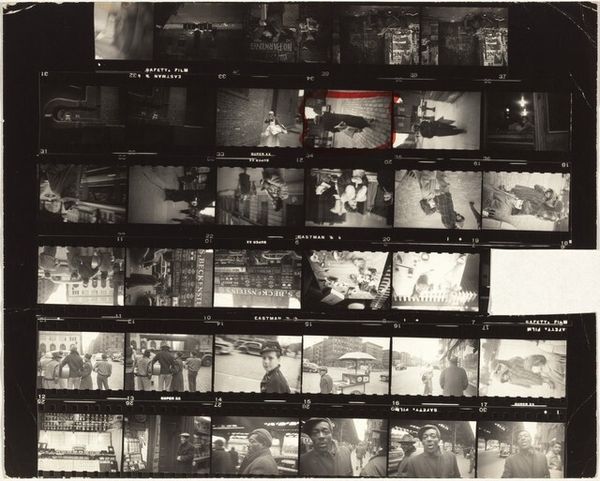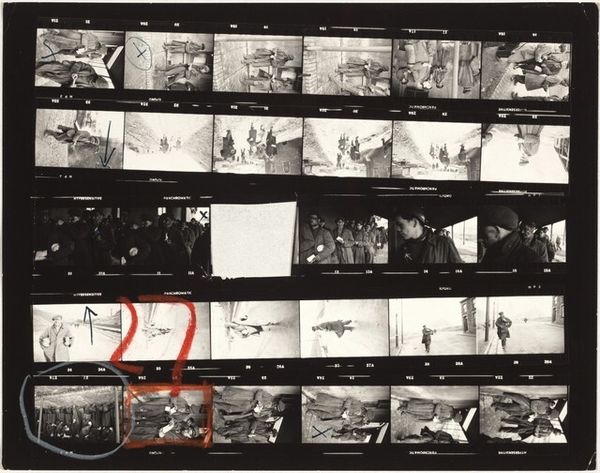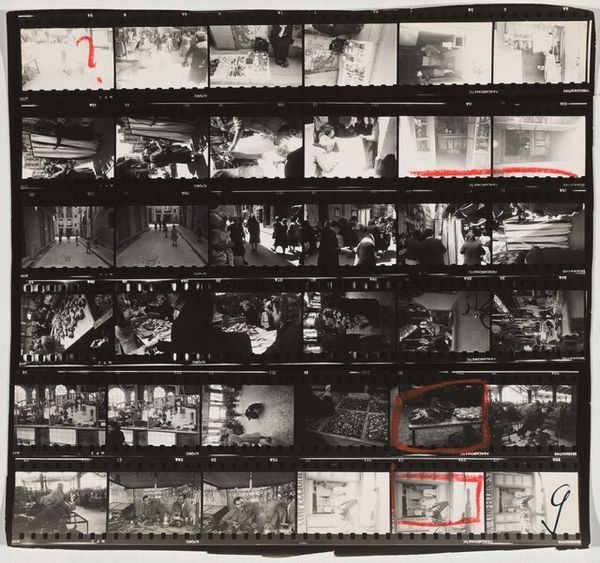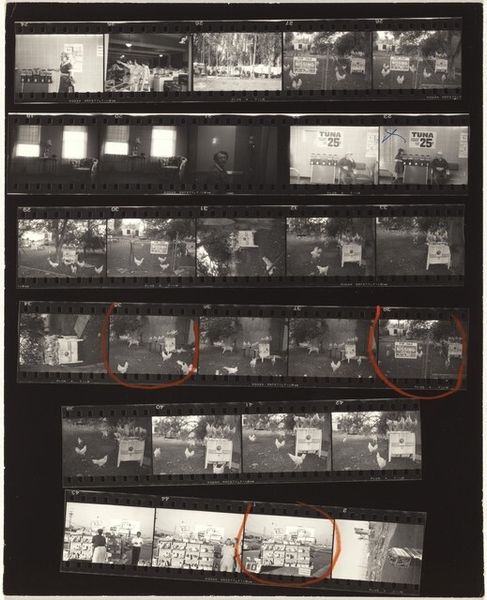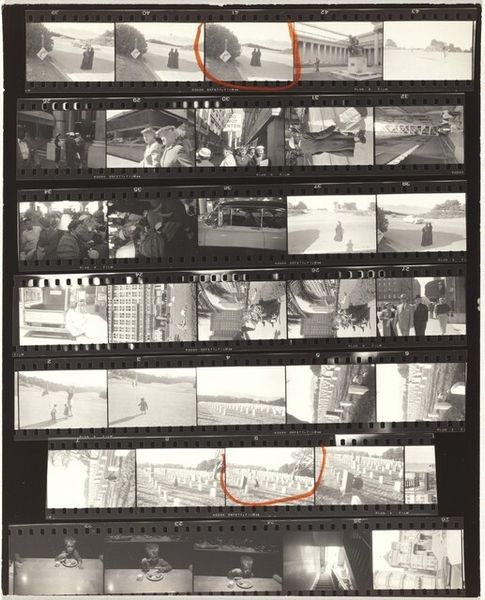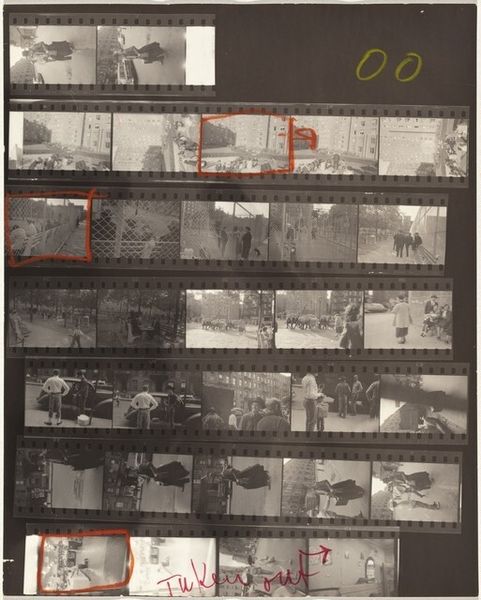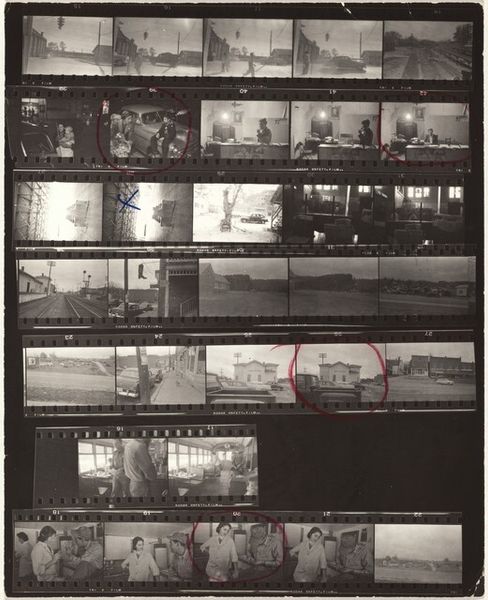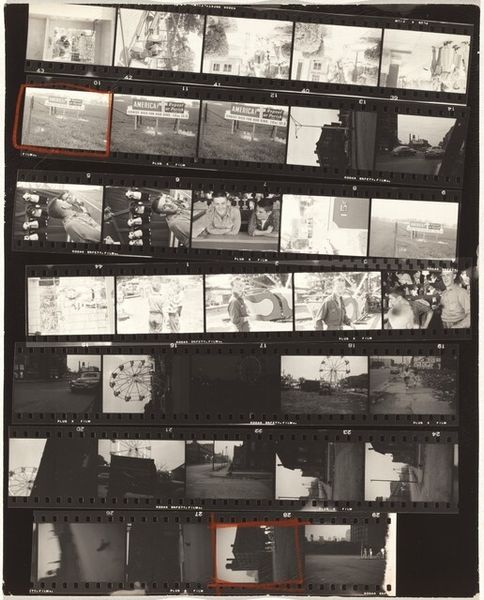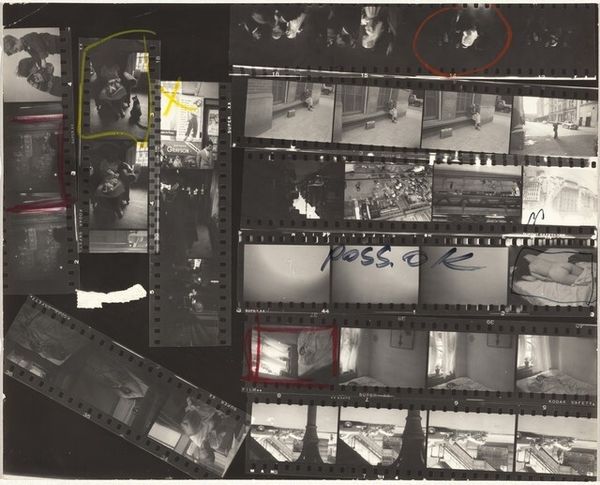
Dimensions: overall: 17.9 x 20.4 cm (7 1/16 x 8 1/16 in.)
Copyright: National Gallery of Art: CC0 1.0
Curator: This is Robert Frank's "Valencia, Spain 27", taken in 1952. What strikes you initially? Editor: The stark contrasts, definitely. It’s a gelatin silver print, but the darkness is so pervasive, it almost feels… claustrophobic, like glimpses into hidden lives. Curator: Indeed. Formally, the print presents itself as a series of images on a photographic contact sheet, each a miniature narrative framed by the dark, bordering film. There's a calculated order here, with handwritten annotations indicating the photographer’s selection. Editor: It reminds me of forensic evidence, like piecing together a narrative from fragments. The scrawled 'R' on some of the frames screams for attention, underscoring their potential importance. Given the era, I can't help but consider the socio-political subtext, particularly concerning life in Spain during Franco’s dictatorship. Were these ‘acceptable’ images, or did Frank encounter difficulties? Curator: Your point about its historical reception is crucial. However, viewed from a purely formalist perspective, that "R" introduces an intriguing element of subjective emphasis—Frank's hand disrupting the otherwise objective surface of the photographic documentation. We see his intent quite literally marked upon the work. Editor: I think it suggests his critical view. Street photography like this inevitably captures the social climate of a time, regardless of the artist's intention. It shows how limited people’s lives and their social gatherings were. How light and hope felt restricted in daily living during this time period. Curator: Undoubtedly, these slices of Valencian life are saturated with atmosphere. The repetition of enclosed or tightly framed spaces within the contact sheet intensifies a feeling of compression, a lack of expansive vista, creating a complex visual rhythm. Editor: And understanding Frank’s wider body of work within the context of post-war Europe provides further depth, highlighting how his vision resonated with broader anxieties and aspirations of the time. It shows, visually, an intimate connection. Curator: It all adds up to something remarkably affecting, as evidenced by these various layers of social history intertwined with deliberate technique. Editor: Absolutely. Frank's choices invite us to think deeply about the narratives inherent in photographic evidence.
Comments
No comments
Be the first to comment and join the conversation on the ultimate creative platform.

